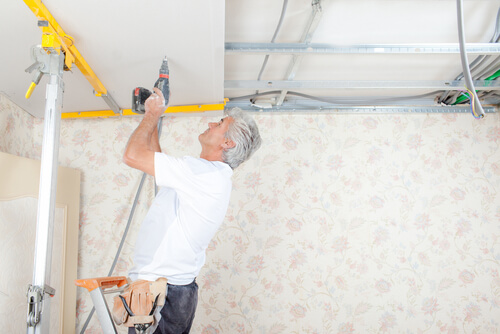Whether you are renovating a home or an office building, safety is on your mind (or should be) and so is lead-safe remodeling. Homes and older building are likely to contain lead-based paint if built before 1978. The paint in and of itself is not the problem, the problem is its degradation that releases toxic chemicals.
It is not uncommon at all for lead exposure to occur when doing home remodeling. The most commonly known source of lead is of course lead-based paints which are dangerous when the paint gets damp or damaged and peels, chips, chalks, or cracks.
It is a hazard especially for children who have the tendency to explore and touch and often put things in their mouth. While you cannot always control what you buy, you can control your living space and if you can be thorough, you can verify if your workplace and your children’s schools or daycares are susceptibles to contain lead.
When it comes to a lead-safe remodeling of your home, there is a lot you can do and some you cannot.
What you can do for lead-safe remodeling
The EPA (Environmental Protection Agency) has reinforced their RRP (Renovation Repair and Painting) reinforcing guidelines about lead-safe remodeling but their Renovate Right brochure has not been as widespread and distributed to homeowners as much as it could have been.
The RRP rule states that if the remodeling job, done on a building, home, apartment or a facility used by children, implies replacing windows (no matter the size) and moving 6 square feet interior or 20 square feet of exterior paint, they have the option to test for lead.
Contractors performing that kind of renovation must be EPA certified and trained in lead-safe practices and cleanup procedures and follow OSHA protocols in order to protect their employees if the presence of lead is detected.
If you are an individual, the EPA advises to not disturb any surface suspected of containing any lead in risk of contaminating yourself and your family (especially your children) and to hire an EPA certified contractor. Although they give safeguards to DIYers:
- Work safely
- Remove everything from the room
- Get the right equipment (respirators, vacuum cleaners… )
- Follow lead-safe practices
- After each day clean the room of any debris to avoid the dust to spread into the air
- Hire a certified lead abatement inspector to determine the presence of lead
What you cannot do
If the building was built before 1978, assume the presence of lead. Any type of renovation will generate dust and it’s mainly through the dust that there is a risk of contamination. What you absolutely cannot do is:
- Use a power tool to sand the painted surface
- Burn the material
If ensuring lead-safe remodeling is subject to such high standards from the EPA, DIY should not even be on your mind for the project. From tools hooked to vacuums equipped with HEPA filters to heat guns no hotter than 700°F, EPA lead-safe certified contractors are following strict rules to protect your health, including keeping records of the job for 3 years.
As a full-service construction and remodeling company in San Diego, Collom Construction possess the resources necessary for a successful project. We deliver products of quality craftsmanship and work with you to meet your needs and respect your budget.
Give them a call today to set up an appointment for a free quote
